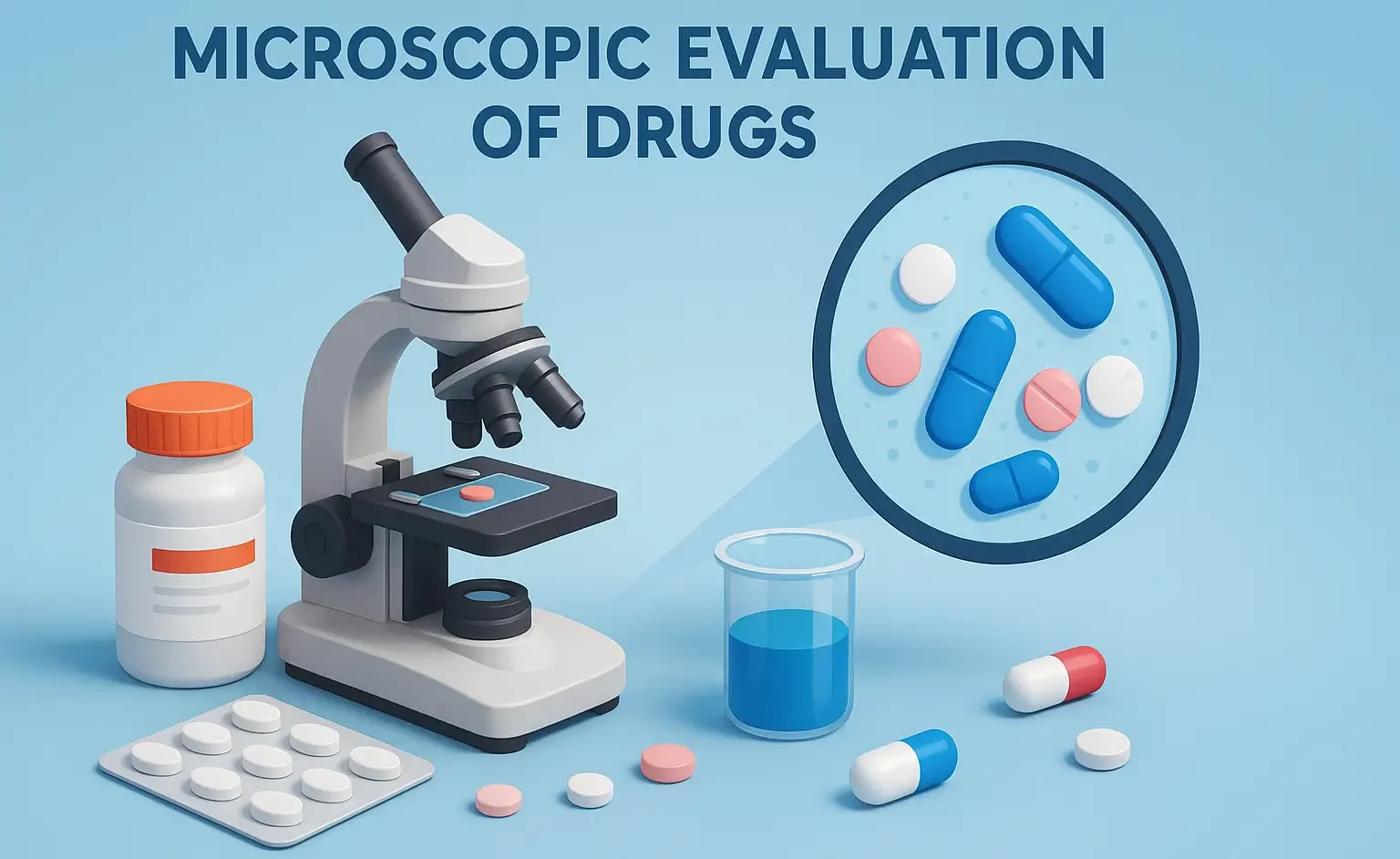- Microscopic Evaluation of Drugs identifies structural features of crude drugs using magnification.
- Microscopic Evaluation of Drugs ensures quality, purity, and detection of adulteration.
Definition
- Microscopic examination of crude drugs (whole or powdered) to study histological or cellular
Procedure
- Preparation of thin sections (e.g., transverse or longitudinal) of the plant part.
- Staining or clearing the sample (e.g., with chloral hydrate, phloroglucinol + HCl).
- Observation of distinctive tissue structures (e.g., trichomes, stomata, vascular bundles, calcium oxalate crystals).
Key Properties Assessed
- Diagnostic cell structures (types of fibers, vessels, glands).
- Characteristic inclusions (starch grains, crystals, pigments).
Significance
- Definitive identification of plant drugs.
- Detection of foreign matter (e.g., other plant tissues, insects).
Limitations
- Requires expertise in plant anatomy.
- May not reveal chemically similar adulterants if they share similar microscopic features.
Click Here to Watch the Best Pharma Videos

